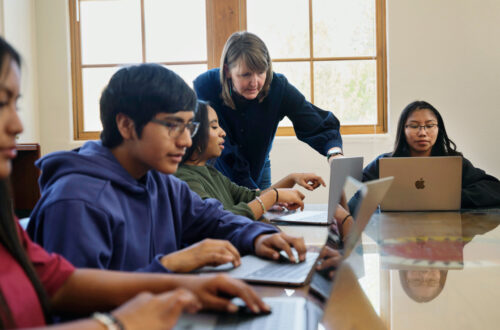What education (Gen Z learning preferences) can learn from Gen Z’s favorite teacher: the algorithm.
🎧 The Day Learning Got a Wi-Fi Signal
It’s 11:47 p.m., and Maya—17, self-proclaimed night owl, aspiring UX designer—is deep into a YouTube binge. Not of vlogs or dance challenges, but a 45-minute tutorial on Figma. Her math textbook? Somewhere under her hoodie.
She isn’t skipping school; she’s redefining it.
Welcome to the classroom of Gen Z—where the teacher is a content creator, the lesson plan is an autoplay queue, and curiosity clicks faster than a bell can ring.
🧠 Gen Z Learning Preferences: The Reboot We Didn’t See Coming
Let’s set the scene: Gen Z (born roughly between 1997 and 2012) grew up not just with the internet—but with it in their pockets. They didn’t just download knowledge; they streamed it. Constantly.
Unlike previous generations who saw learning as a linear climb (kindergarten to college), Gen Z treats it like a playlist: pause, skip, rewind, rewatch.
So when they walk into a traditional classroom—with lectures, paper worksheets, and passive listening—it’s not nostalgia. It’s a system crash.
Here’s what Gen Z wants from learning—and what YouTube delivers on demand:
📲 1. Control: Learning on Their Own Terms
Classroom reality: “Sit still, raise your hand, wait your turn.”
YouTube reality: “Speed it up, slow it down, replay the tricky part. Again.”
Gen Z thrives on autonomy. In an era of infinite content, they don’t wait to be taught—they seek answers. YouTube gives them micro-mastery: bite-sized lessons they can control.
Need to learn calculus for a test? Or how to edit a cinematic TikTok reel? Either way, there’s a creator for that—and no judgment if you pause ten times.
🔍 2. Relevance: Why Am I Even Learning This?
If Gen Z had a motto, it might be: “Make it make sense.”
They crave context. In classrooms, abstract topics can feel detached from reality. But YouTube? It’s all about application. A tutorial on how interest rates work uses real mortgage examples. A biology explainer shows you why sleep affects your skin.
Creators connect curriculum with culture. Suddenly, mitochondria isn’t just the powerhouse of the cell—it’s the reason you crash at 3 p.m. after energy drinks.
🎙️ 3. Voice and Vibe: Learning from Real People, Not Textbooks
YouTube educators—people like Physics Girl, Ali Abdaal, and AsapSCIENCE—aren’t just teaching. They’re storytelling.
They say “Hey friends!” not “Good morning class.”
>They use memes, jokes, personal struggles.
>They feel relatable, not robotic.
Gen Z doesn’t want a perfect professor—they want someone authentic, someone who’s failed, struggled, and figured it out.
In classrooms, perfection is the performance. On YouTube, imperfection is the hook.
🎮 4. Visual-First Learning: Gen Z’s Native Language
Remember Maya, the Figma fanatic? She’s not reading long paragraphs on design theory—she’s watching the interface in action. Gen Z is a visually fluent generation, raised on motion graphics, screen recordings, and kinetic typography.
YouTube’s visual pedagogy mirrors how they process the world. No chalk dust. Just screen share.
🌎 5. Global Access, Diverse Voices
A classroom has four walls. YouTube doesn’t.
A kid in Auckland can learn coding from an engineer in Berlin, or hear a Black mathematician talk about breaking barriers at MIT. YouTube democratizes representation in a way most textbooks can’t.
Gen Z values inclusivity and global perspective—and they find both in their YouTube feed.
💥 So, Is the Classroom Dead?
Not at all. But it is being outpaced.
Traditional education isn’t irrelevant—it’s just outdated in how it connects. Teachers still matter, structure still matters. But to win back Gen Z, classrooms must learn from YouTube:
- More video. Less lecture.
- More autonomy. Less control.
- More real-world tie-ins. Less abstraction.
- More personality. Less perfection.
Imagine a world where teachers curate YouTube playlists. Where homework includes a reaction video. Where students learn not to memorize, but to navigate.
✍️ Final Take: What Education Can Learn from the Feed
Gen Z’s preference for YouTube over classrooms isn’t laziness—it’s literacy in a new format. It’s their way of saying:
“Teach me something useful. Make it visual. Make it human. Let me replay it at 1.25x speed.”
And maybe that’s not a rejection of education—but a blueprint for where it needs to go next.
👇 Your Turn
Are you an educator trying to connect with Gen Z? A student thriving in the world of self-taught skills? Drop your thoughts in the comments—or better yet, record a video response.
Because if we’ve learned one thing—it’s that Gen Z doesn’t just want to learn.
They want to click, connect, and create their own way.





